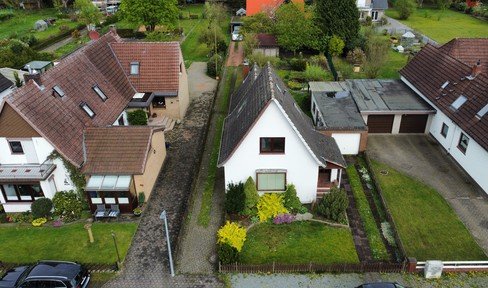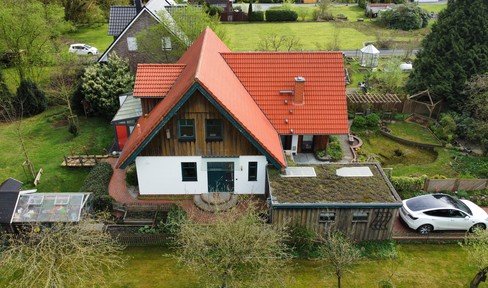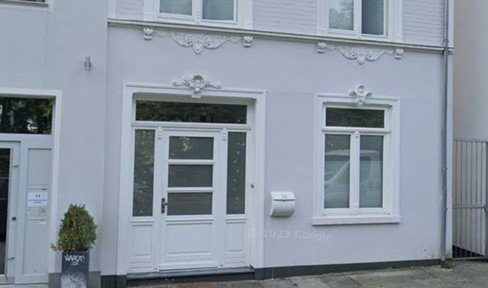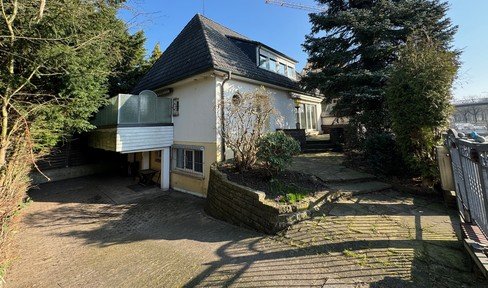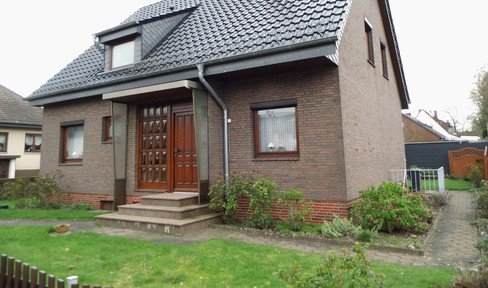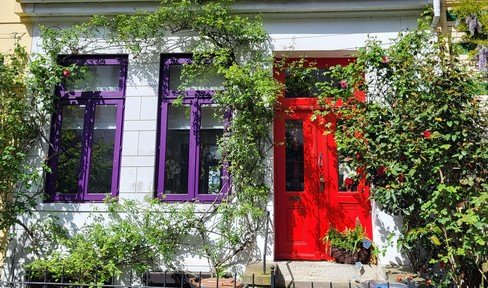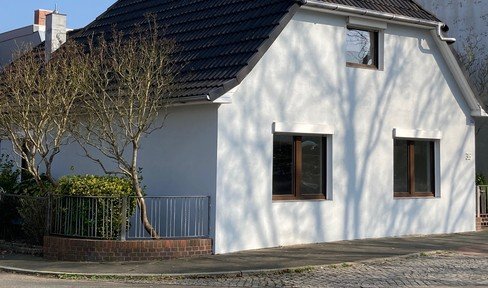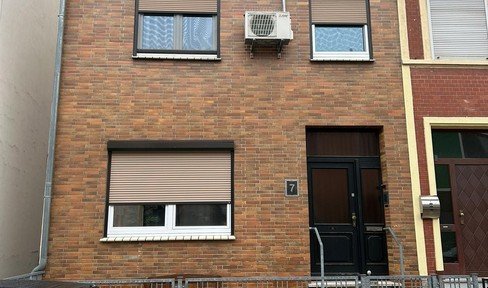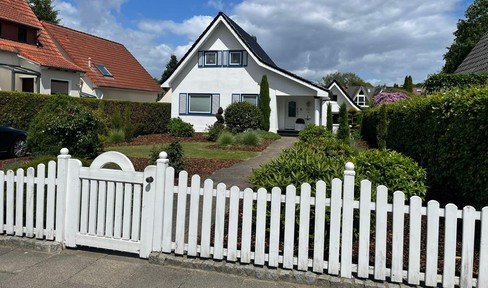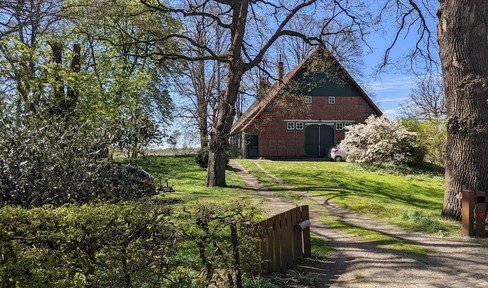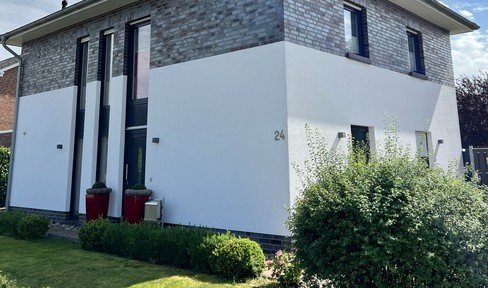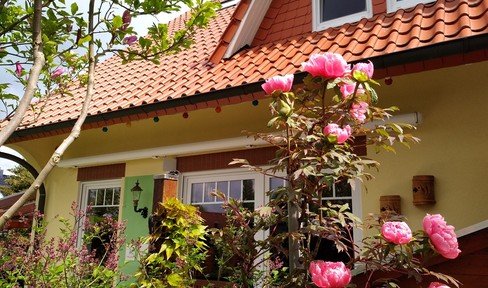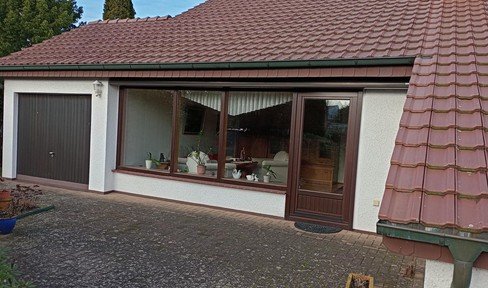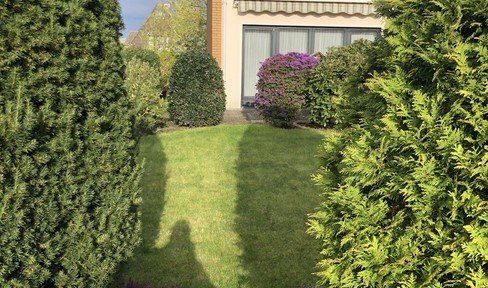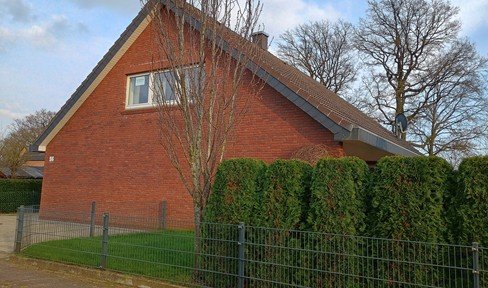- Properties
- Houses for sale
- Bremen
- Bremen

This page was printed from:
https://www.ohne-makler.net/en/properties/house-buy/bremen/bremen/
Comission-free Houses for sale in Bremen
Here you will find 27 offers for commission-free Houses in Bremen and surroundings
Richly decorated terraced houses as a rarity, new construction in villa districts
The Hanseatic, port, trade and craft city on the Weser not far from the North Sea can look back on more than 1,200 years of proud city history. As one of the most important maritime routes to the world in Germany, Bremen, with its current population of almost 550,000, has played an indispensable leading role in local maritime and foreign trade since at least the beginning of the 19th century. The citizens, who became wealthy at an early stage, then also invested diligently in the development of their city and houses. To this day, the typical so-called "Bremen houses" with their elegant and unmistakable style mix of historicism, classicism and art nouveau in row house construction characterize numerous streets, for example in the popular district of Mitte and its suburb Ostertor. It is precisely there in the entire old town and city center, as well as in the now quite expensive eastern suburbs (Steintor, Fesenfeld, Peterswerder, Hulsberg), that the strong demand for such historic and refurbished houses has led to a sharp rise in prices and a significant shortage of supply in recent years. The northeast of the city, which is dominated by many villas, has become even more expensive. Especially in Schwachhausen, Horn-Lehe and Oberneuland, prices between 500,000 and over 2 million euros for single-family homes are not uncommon. Current multi-family and terraced house projects such as the new Mühlenviertel in Horn-Lehe, the "Neue-Hulsberg-Viertel" planned on the site of the Klinikum Mitte hospital and most of the new buildings in Neu-Schwachhausen also tend to be among the high-priced house offerings.
Simple former working-class neighborhoods have become sought-after residential areas
Most of the neighborhoods on the left bank of the Weser in the southern district (Neustadt, Obervieland, Huchting, Woltmershausen, Seehausen, Strom) have also seen strong, if comparatively moderate, price increases. Particularly in Neustadt, which is close to the city center, many new residential buildings have been built in recent years on former industrial sites, for example at Teerhof (Alte Neustadt), on Hardenbergstrasse (Buntentor) and at Dammacker and Buntentorsdeich on Lake Werder in the Huckelriede district, where the price range is roughly between 150,000 and 600,000 euros for a single-family home. The smaller neighborhoods of Woltmershausen, Seehausen and Strom are somewhat less expensive, but also heavily industrialized in places. The southern outskirts of Huchting are quieter, and house prices in Kirchhuchting and Mittelshuchting are still surprisingly affordable, currently ranging from around 1,200 to 1,500 euros/m². Obervieland and its districts of Kattenturm and Kattenesch are also quite inexpensive, with terraced and detached houses still available there in some cases for just over 1,000 euros/m². By contrast, house prices in the West district on the right bank of the Weser have developed much more dynamically, especially in the former working-class and now up-and-coming district of Findorff around the well-known Bürgerweide event area (Bremer Freimarkt), with reference values of between around 150,000 and 600,000 euros. Of its districts Utbremen, Steffensweg, Westend, Walle, Osterfeuerberg, Hohweg and Überseestadt, the latter is particularly worthy of mention, as various new residential, commercial and office buildings have been built there since 2007 with the Überseepark development plan and are still planned.
On the outskirts of Bremen there are both rural neighborhoods and large housing estates.
In the adjoining district of Gröpelingen to the west (Lindenhof, Gröpelingen, Ohlenhof, In den Wischen, Oslebshausen), the densely built-up and multicultural district of Lindenhof in particular is still a fairly affordable area for buying a house, with prices below 1,000 euros/m². A rural appearance with many allotments and detached single-family houses is offered by the Blockrand district on the northern outskirts of Bremen. Again, the northwest of Bremen in the northern district (Burglesum, Vegesack, Blumenthal) is considerably more expensive. In particular, Burglesum, with its new development area in the parkland of Sankt Magnus, and the waterfront locations on the former shipyard site in Lesum are in good demand. In Vegesack, the district of Aumund-Hammersbeck is the most expensive area for houses at around 2,300 euros/m², while Grohn, Schönebeck and Fähr-Lobbendorf are less expensive at around 1,500 euros/m². The Blumenthal district, including its suburbs of Blumenthal, Lüssum-Bockhorn, Rönnebeck, Farge, and Rekum, is equally characterized by large industrial areas and, in part, still village-like areas; with a little luck, houses can still be bought there for less than 1,000 euros/m². Comparable prices, but rather fewer detached single-family houses can be found in the extreme southeast of Bremen. In the district of Vahr as well as in Osterholz (Ellener Feld, Ellenerbrok-Schevemoor, Tenever, Osterholz, Blockdiek), many apartment blocks from the 1960s to 1980s dominate. Hemelingen, on the southeastern border of the city, is a little more relaxed. In the districts of Sebaldsbrück, Hastedt, Hemelingen, Arbergen and Mahndorf, there are various bodies of water that are popular as recreational areas, such as the Mahndorfer See.
Shorts facts Buying houses in Bremen:
- The classic "Bremen houses" in the center have become much more expensive
- Prices are also high in the eastern villa areas
- Almost all waterfront locations are in high demand and therefore relatively expensive
- South of the Weser, the Neustadt district is one of the most popular areas.
- North of the Weser, Findorff, Walle and Überseestadt have become more expensive.
- On the northern outskirts of the city you can still find rural tranquility in parts
- In general, the northeast of Bremen is more expensive than the southeast, and the east is more expensive than the west.
Houses for sale around Bremen
Properties to Rent in Bremen
Properties for Sale in Bremen
Diese Seite wurde ausgedruckt von:
https://www.ohne-makler.net/en/properties/house-buy/bremen/bremen/
